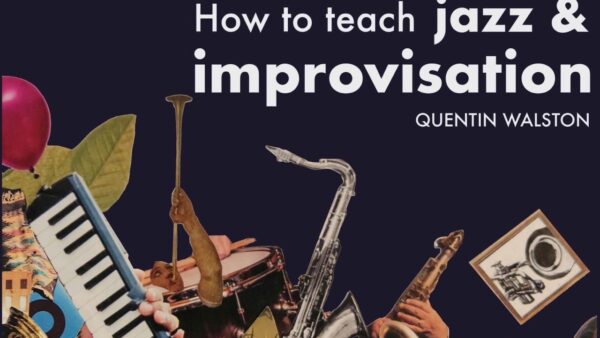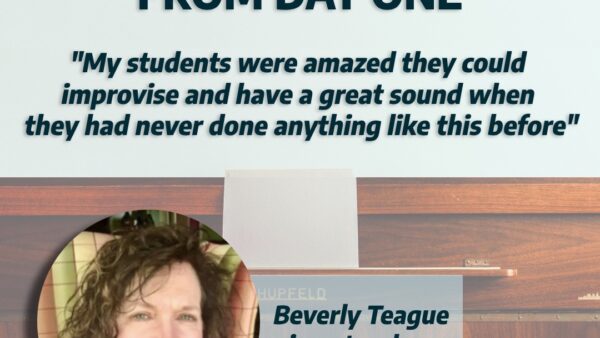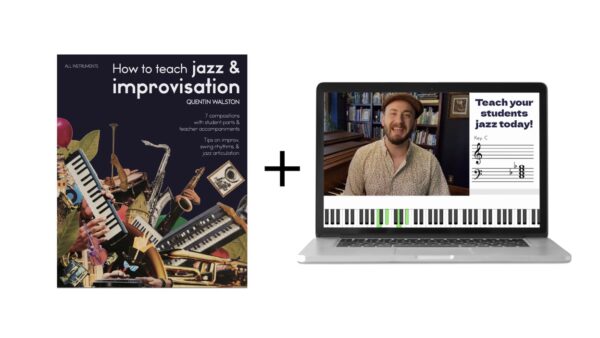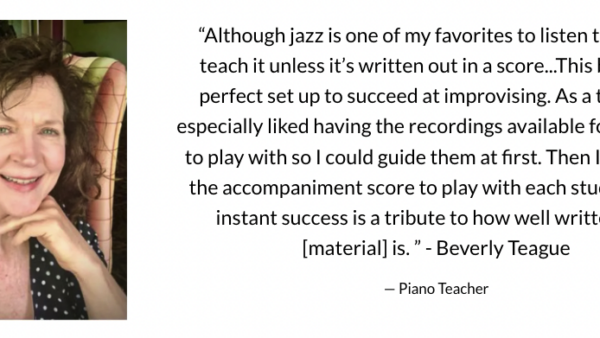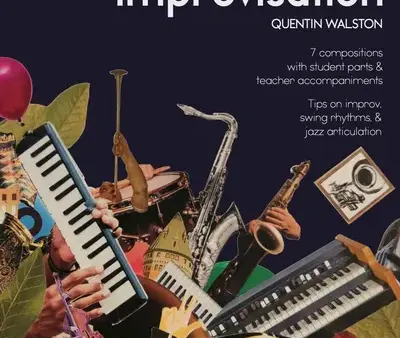Jazz Improvisation can be tough, these fun improvisation games get students started on creating spontaneously!
There are lots of ways to foster students’ abilities to improvise. As a teacher myself, I use these with my own students and with bands and ensembles I have guest-taught. These improvisation games are fun and can be used with a wide variety of ages as well as lessons & classes. These and more tips on teaching jazz & improvisation can be found in my book, “How to Teach Jazz & Improvisation.”
Chaos*
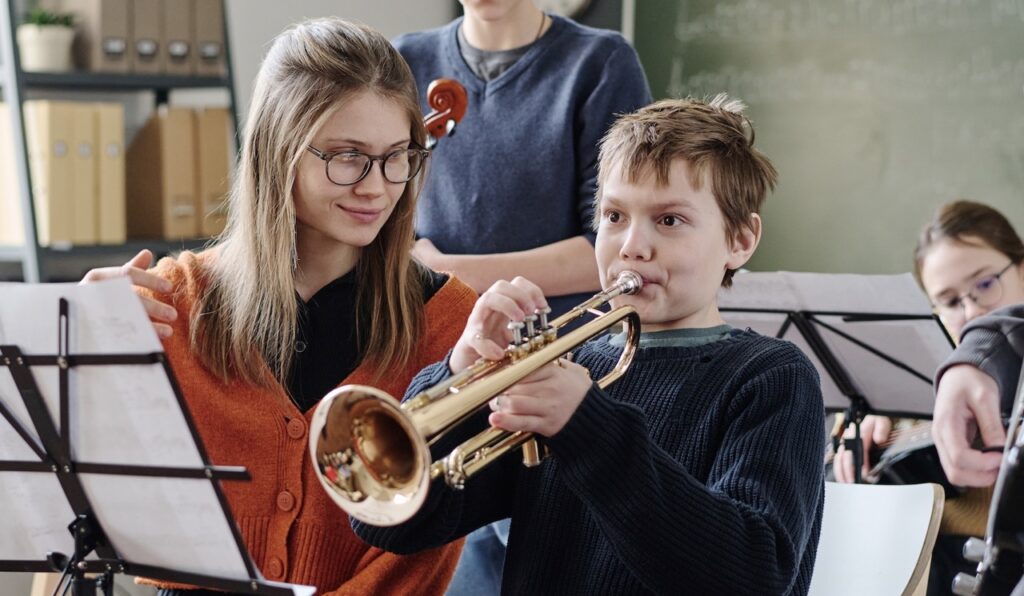
Sometimes you just need to break the ice! If you have a group of students that are particularly shy (maybe a middle school band new to their instruments or new to jazz), this is a fun activity. To ease the tension of improvising, allow 30 seconds of chaos where all students can play simultaneously whatever they want as loud as they want! You can also vary this by having students play from a specific improv scale. By having all students play at the same time instead of being singled out, they warm up to the idea of playing off-book.
The following improvisation games have a little more structure!
Fill in the Blank
This is a great game that can be used for all ages and abilities, and can generate laughs too. The teacher starts by playing a familiar melody and stops right before the end. The student then “fills in the blank,” playing their instrument (or singing). Do not insist students play the actual missing notes of the melody, but rather improvise new notes. Do encourage that students play confidently. Borrowing the original rhythm is a great place to start, but students can explore the blank by creating passages of different lengths and rhythms. You can provide them with a suggested scale/key to play within, or give them no tonal boundaries! See examples below. In classes, this can grow quite silly as the phrase makes it way around the room with many different improvised endings, but the purpose stands by encouraging students to create new music in the moment confidently.
*I’m grateful to Nathan Gredler for showing me the Chaos game.
Melody Chain

I’m a big fan of improvisation games that can be modified to different ability and complexity levels. This one does just that while also bolstering music theory knowledge!
The first player plays the first two notes of a scale. The next player plays the last note they just heard, followed by a note of their choosing*. (Example: Player #1: C D; Player #2: D E; Player #3: E F…) This continues as long as you wish. It is an easy concept but can be a fun challenge to complete!
*I recommend starting with a major scale, played in scale order. Students are familiar with it, and the game develops their ability to use their ears to keep track of where they are, not reading music on the page. You can introduce endless variations to challenge all levels of students! My favorite variations include students choosing whether to go up or down (Ex: player #1 C D, player #2 D C, player #3, C B), moving through other scales (ex: harmonic minor), and using different intervals (ex: student #1 plays a major 3rd then a major 2nd, student #2 plays a major 2nd then a perfect 4th).
Rhythm Chain
Very similar to the game above, Rhythm Chain focuses on students recognizing and repeating a rhythm, then adding their own. I recommend using preselected rhythms (use a type of “word bank” of rhythms on a page or whiteboard). This allows students to review challenging rhythms, and the teacher can ensure the student is properly playing the desired rhythm. This is another of the improvisation games that is great for music theory.
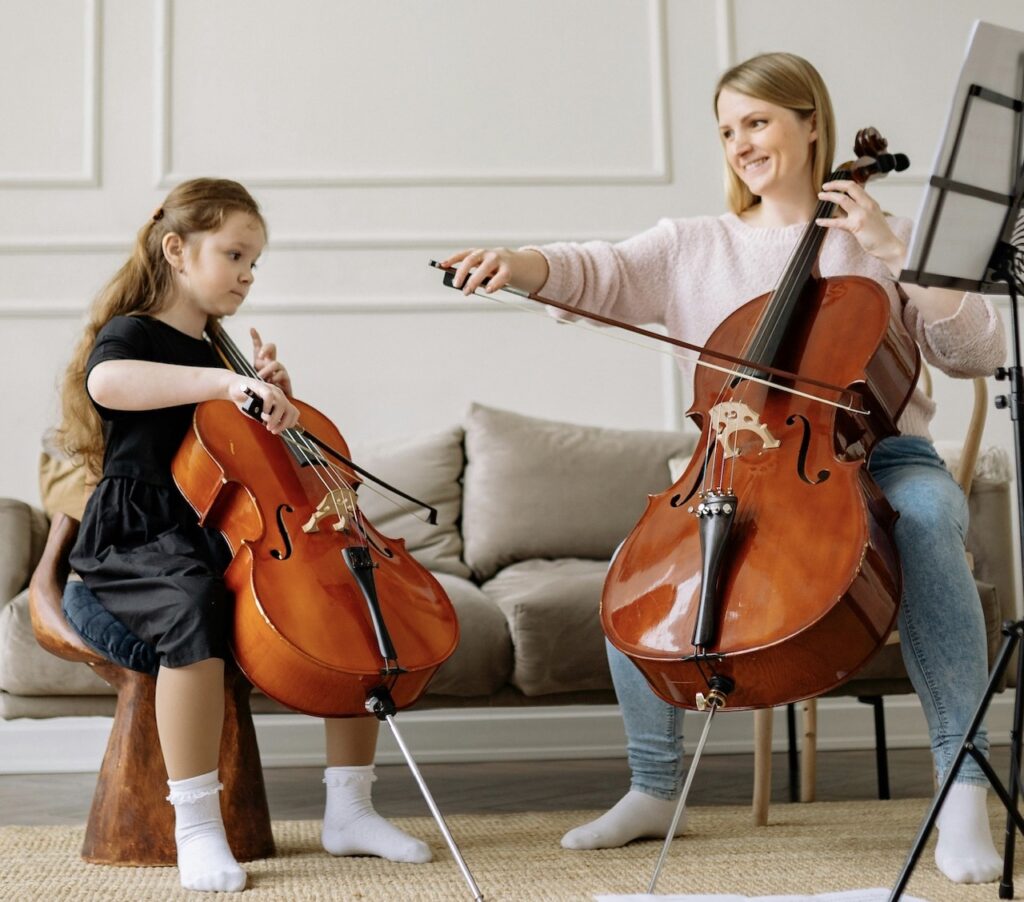
Trading
This is commonly used by professional jazz musicians in concerts and in famous recordings. Musicians take turns soloing for 4 measures at a time. The soloists should build off what the other person plays (rhythm, scale, melody, phrasing). It does not have to be mimicry, but should have a conversational feel.
Beginners can trade over a vamp on one chord; more advanced students should trade over full progressions. Variations include trading eight measures, two measures, or one! Play with a whole class or back and forth between you and your student.
Create a Story
This imaginative activity works on improvisation while also fostering compositional skills. Encourage the student or class to pick three or four emotions, then you as the teacher write them on a piece of paper or the board. Next, ask students to list the general musical qualities one would associate with each emotion. Musical qualities can include dynamics, tempo, range, major/minor, etc. For example, if a student said “excited” you could list “forte, allegro, and major.” (You don’t have to exhaust the musical qualities for each emotion, sometimes just two or three work perfectly.)
After you’ve completed the musical qualities for each emotion, your student has the framework to improvise a short piece! They can spend as much time as they like (or you can conduct) on each word before moving on. This gets students thinking of music in terms of conveying emotion and telling a story, not just playing notes on a page. It helps them explore strong musical contrasts and it introduces broader musical development that could be used for a budding composer!
If you want to do this game in a class setting, I recommend having the class come up with the words and qualities, then leading them on your instrument in an improvisation within an established key. It’s okay if things sound a little crazy!
Download the PDF of the 6 Amazing Improvisation Games!
Learn more about teaching jazz & improvisation with the book teachers around the country trust!
About This Is Jazz founder, Quentin Walston

Quentin Walston is an active jazz pianist, composer, and founder of This Is Jazz, a company dedicated to jazz appreciation and education He performs with his jazz trio and as a solo pianist (his music can be streamed here and purchased here), blending memorable melodies and striking rhythms with adventurous improvisations. As an educator, Quentin gives workshops & seminars for all ages on jazz, composition, and music history, bringing a passion to jazz performance and education in any setting, classroom or concert hall. Quentin Walston also helps bring jazz into classrooms and lessons throughout the country by equipping educators to teach jazz through his book “How to Teach Jazz & Improvisation.”
